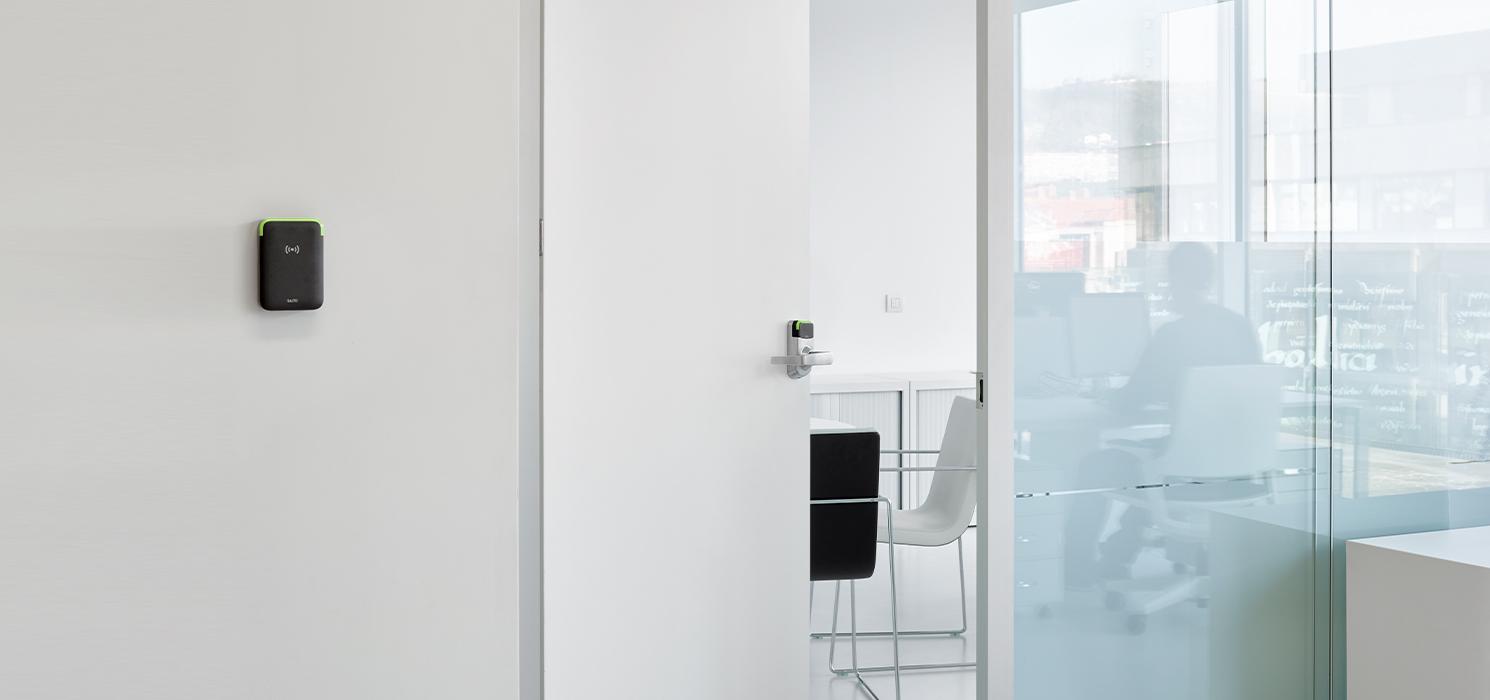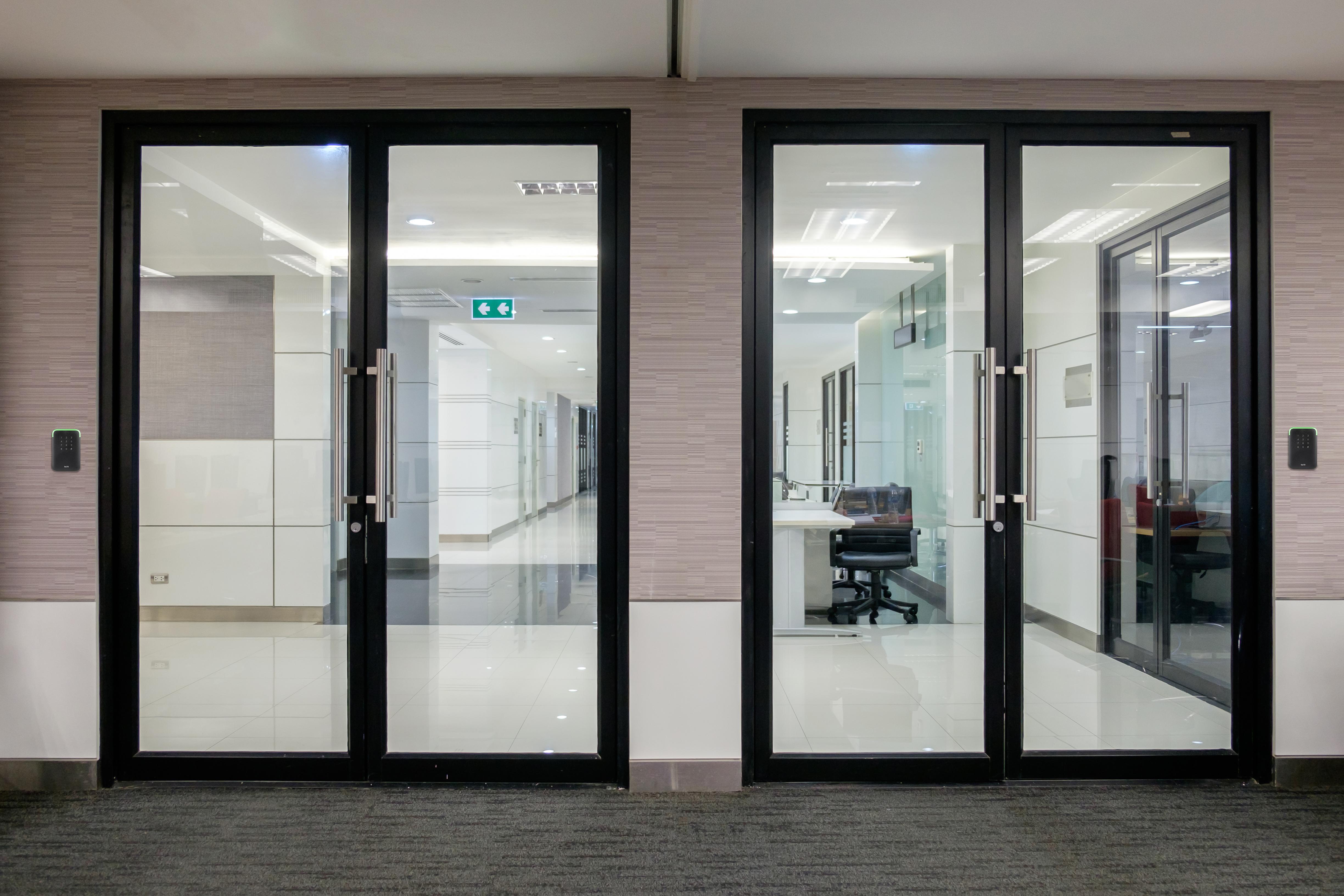As the healthcare system grows, securing these facilities becomes ever more challenging. Increasingly, medical providers have multiple facilities within their networks, making traditional keying systems and credentialing impractical.
Expensive wired access control for select high-security doors combined with old-fashioned keyed locks was a step in the evolution of facility security, but this provided very little visibility into who used those doors. Replacing traditional keyed doors with wireless access was the natural outgrowth of this inefficient, hybrid solution.
Kyle Pfeiffer, Industry Solutions Leader—Healthcare of SALTO Systems, notes, “Security remains at the forefront of decision-making in healthcare, driving technology for access control to evolve. By integrating keyless entry into an existing infrastructure, healthcare professionals are better equipped to control the flow of people entering or exiting the premises without impairing efficient movement.”
Physical Keys: Impractical and Expensive
While high-security areas may require wired electronic systems, there still exists the problem of physical locks and keys on all the other doors. Pfeiffer says, “Most offices within medical facilities are still using mechanical keys, which is not an effective way to secure or protect information in those areas.”
Moreover, managing physical keys is costly. He cites the example of doctors checking into a working suite at the hospital for an extended time period. “They hardly ever return the suite’s physical keys when checking out. Those locks then need to be replaced for security purposes,” he says, which is an expensive undertaking. “Doors that use physical keys and locks can cost facilities up to six figures each year just to manage and replace them.”
However, the smart technology used with wireless access allows for a quick and easy credential change made by a security administrator when the physician leaves, without requiring that the lock itself be switched out.
Pfeiffer notes that installing wire-free locks like those in SALTO’s Virtual Network (SVN) is an easy and cost-efficient alternative to mechanical keying systems. “They don’t require running wires and are easy and inexpensive to install. Replacing mechanical locks with SVN technology is an investment that pays for itself in less than a year and provides significant savings every year thereafter.”
The Benefits of Wireless Access Control
A major benefit of keyless access control is that all doors are managed on a single system, without the problems of handling different types of locks and multiple credentials. This allows for efficient management of foot traffic and identification of unwanted visitors.
Staff members also benefit. Medical professionals have access to different areas, floors, buildings and offices without fumbling around with multiple physical keys or managing different credentials. Being able to add more keyless entry points also makes matters easier for security and IT staff, while providing them with increased visibility into access data. They also have the ability to quickly manage an urgent situation or change staff credentials.
Finally, a keyless access system like SVN allows for the growth of medical systems. As large healthcare complexes add clinics, buildings and locations, wireless access control manages both interior and exterior doors on a single system, saving money while increasing security and convenience.
The Future of Wireless Access Control
Pfeiffer observes, “Within any healthcare facility, leadership has the responsibility to regulate areas where patient records are kept. Keyless systems improve security, thereby ensuring compliance and patient privacy.”
Maintaining these high standards in order to meet regulatory standards like HIPAA will continue to drive the technology of wireless access control. Its future in healthcare security not only brings with it the benefits of meeting patient privacy needs, but also provides significant cost control and scalability for future growth.
Related Stories
Healthcare Facilities | Oct 28, 2024
New surgical tower is largest addition to UNC Health campus in Chapel Hill
Construction on UNC Health’s North Carolina Surgical Hospital, the largest addition to the Chapel Hill campus since it was built in 1952, was recently completed. The seven-story, 375,000-sf structure houses 26 operating rooms, four of which are hybrid size to accommodate additional equipment and technology for newly developed procedures.
Healthcare Facilities | Oct 18, 2024
7 design lessons for future-proofing academic medical centers
HOK’s Paul Strohm and Scott Rawlings and Indiana University Health’s Jim Mladucky share strategies for planning and designing academic medical centers that remain impactful for generations to come.
Seismic Design | Oct 17, 2024
Calif. governor signs limited extension to hospital seismic retrofit mandate
Some California hospitals will have three additional years to comply with the state’s seismic retrofit mandate, after Gov. Gavin Newsom signed a bill extending the 2030 deadline.
Healthcare Facilities | Oct 9, 2024
How healthcare operations inform design
Amanda Fisher, Communications Specialist, shares how BWBR's personalized approach and specialized experience can make a meaningful impact to healthcare facilities.
Healthcare Facilities | Oct 8, 2024
Herzog & de Meuron completes Switzerland’s largest children’s hospital
The new University Children’s Hospital Zurich features 114 rooftop patient rooms designed like wooden cottages with their own roofs. The project also includes a research and teaching facility.
Hospital Design Trends | Sep 26, 2024
Hospital benchmarking survey shows sharp rise in hospital energy costs
Grumman|Butkus Associates, a firm of energy efficiency consultants and sustainable design engineers, recently released the results of its 2023 Hospital Energy and Water Benchmarking Survey, focusing on healthcare facilities’ resource usage trends and costs for calendar years 2021 and 2022.
Healthcare Facilities | Sep 19, 2024
New El Paso VA healthcare center includes 47 departments, brain and spinal cord injury treatment services
A new 492,000 sf Veterans Administration ambulatory care facility on the William Beaumont Army Medical Center campus near El Paso, Texas will include 47 medical departments and provide brain and spinal cord injury treatment services. A design-build team of Clark Construction, SmithGroup, and HKS is spearheading the project that recently broke ground with anticipated completion in 2028.
Healthcare Facilities | Sep 9, 2024
Exploring the cutting edge of neuroscience facility design
BWBR Communications Specialist Amanda Fisher shares the unique considerations and challenges of designing neuroscience facilities.
Curtain Wall | Aug 15, 2024
7 steps to investigating curtain wall leaks
It is common for significant curtain wall leakage to involve multiple variables. Therefore, a comprehensive multi-faceted investigation is required to determine the origin of leakage, according to building enclosure consultants Richard Aeck and John A. Rudisill with Rimkus.
Sponsored | Healthcare Facilities | Aug 8, 2024
U.S. healthcare building sector trends and innovations for 2024-2025
As new medicines, treatment regimens, and clinical protocols radically alter the medical world, facilities and building environments in which they take form are similarly evolving rapidly. Innovations and trends related to products, materials, assemblies, and building systems for the U.S. healthcare building sector have opened new avenues for better care delivery. Discussions with leading healthcare architecture, engineering, and construction (AEC) firms and owners-operators offer insights into some of the most promising directions. This course is worth 1.0 AIA/HSW learning unit.


















